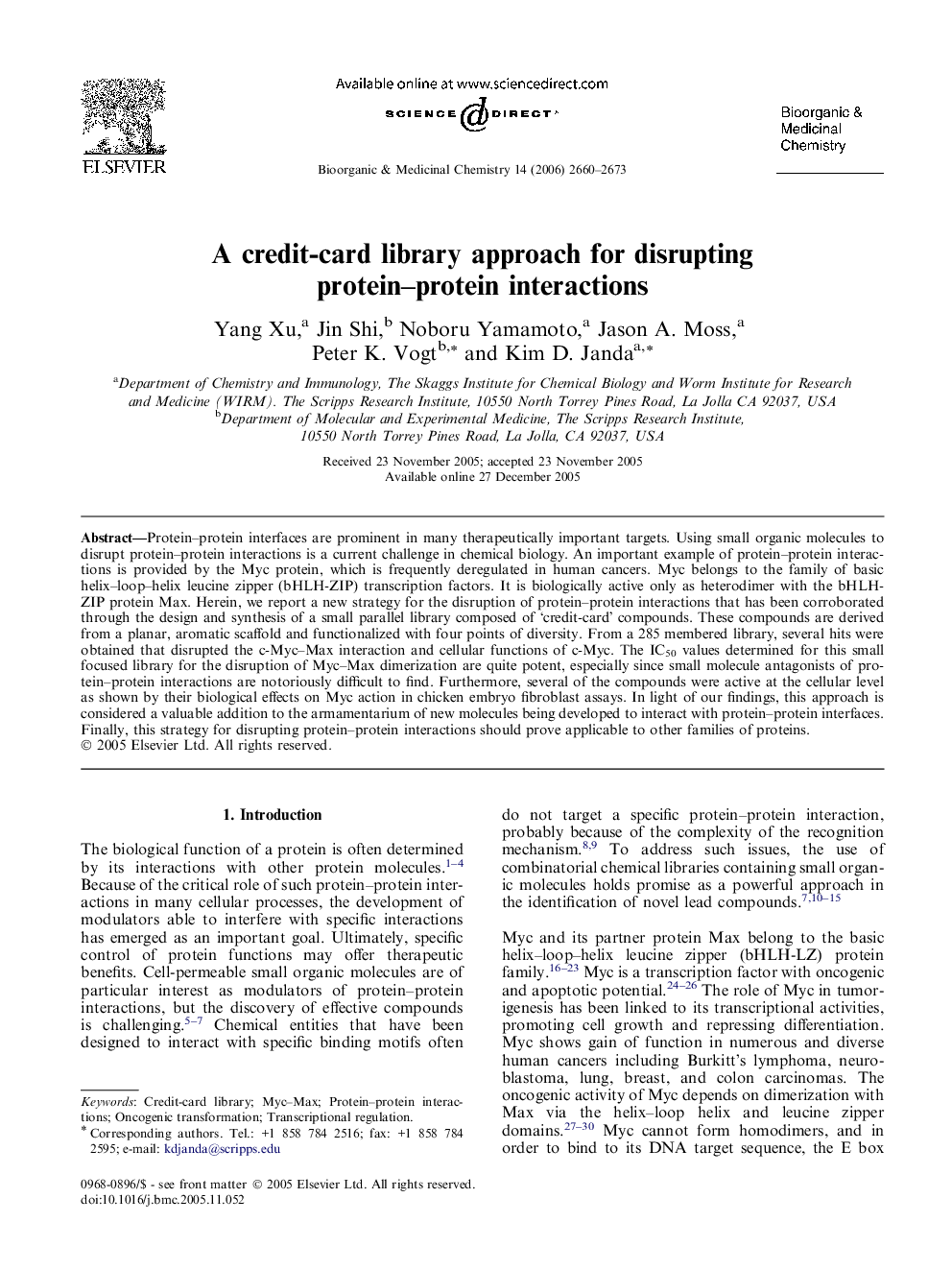| کد مقاله | کد نشریه | سال انتشار | مقاله انگلیسی | نسخه تمام متن |
|---|---|---|---|---|
| 1362409 | 981487 | 2006 | 14 صفحه PDF | دانلود رایگان |

Protein–protein interfaces are prominent in many therapeutically important targets. Using small organic molecules to disrupt protein–protein interactions is a current challenge in chemical biology. An important example of protein–protein interactions is provided by the Myc protein, which is frequently deregulated in human cancers. Myc belongs to the family of basic helix–loop–helix leucine zipper (bHLH-ZIP) transcription factors. It is biologically active only as heterodimer with the bHLH-ZIP protein Max. Herein, we report a new strategy for the disruption of protein–protein interactions that has been corroborated through the design and synthesis of a small parallel library composed of ‘credit-card’ compounds. These compounds are derived from a planar, aromatic scaffold and functionalized with four points of diversity. From a 285 membered library, several hits were obtained that disrupted the c-Myc–Max interaction and cellular functions of c-Myc. The IC50 values determined for this small focused library for the disruption of Myc–Max dimerization are quite potent, especially since small molecule antagonists of protein–protein interactions are notoriously difficult to find. Furthermore, several of the compounds were active at the cellular level as shown by their biological effects on Myc action in chicken embryo fibroblast assays. In light of our findings, this approach is considered a valuable addition to the armamentarium of new molecules being developed to interact with protein–protein interfaces. Finally, this strategy for disrupting protein–protein interactions should prove applicable to other families of proteins.
Protein–protein interfaces are prominent in many therapeutically important targets. Using small organic molecules to disrupt protein–protein interactions is a current challenge in chemical biology. Herein, we report a new strategy for the disruption of protein–protein interactions that has been corroborated through the design and synthesis of a small parallel library termed ‘credit-card’ library. From this 285 membered library, several hits were obtained that disrupted the c-Myc–Max interaction and cellular functions of c-Myc. This strategy for disrupting protein–protein interactions should prove applicable to other families of proteins.Figure optionsDownload as PowerPoint slide
Journal: Bioorganic & Medicinal Chemistry - Volume 14, Issue 8, 15 April 2006, Pages 2660–2673